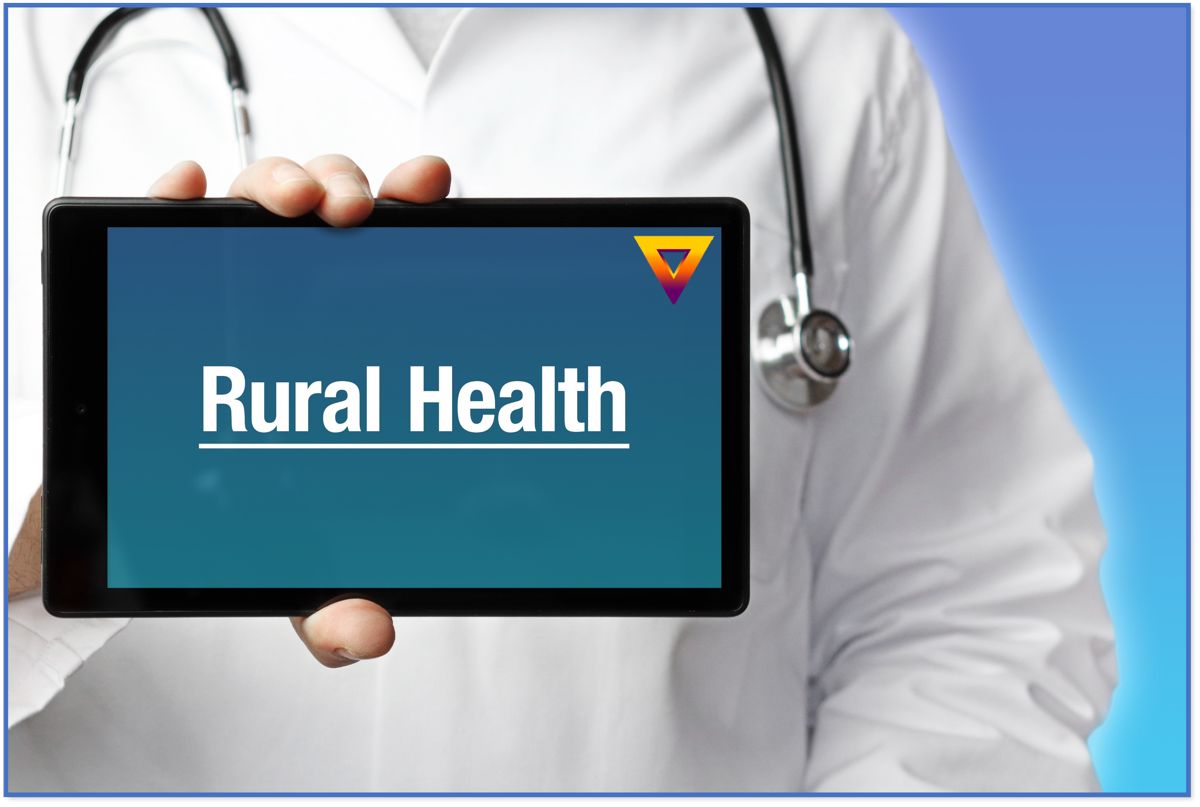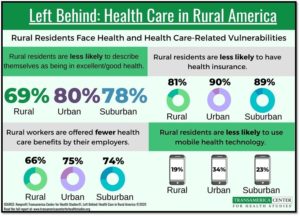
Connected healthcare led by the implementation of telemedicine is quickly becoming an essential component of rural healthcare delivery. In rural regions across the United States and in Canada, there are many challenges rural healthcare providers and patients face. Remote monitoring and access to medical care can be a challenge for rural residents and healthcare providers. The rapid growth of telemedicine has contributed to a marked improvement in rural health. With the growth of advanced technology, such as VOLA’s Connected Health platform, telemedicine is now being used to provide medical assistance and services in rural regions across the United States.

Connected health facilitated through telemedicine can help rural healthcare providers, institutions, and individuals to improve access to and enhance the quality of remote monitoring and patient care. With telemedicine, healthcare providers can increase patient access to medical care when they are not physically able to travel to offices in their area. By using remote monitoring to provide medical services in remote locations, rural Americans can reduce or eliminate obstacles and challenges patients encounter, like long distances and transportation difficulties related to timely medical care. Telemedicine can help address these concerns by expanding access to specialized physicians and specialists in specialty areas, like pediatrics, genetic testing and counseling, cardiology, or podiatry, to name a few.
Telemedicine can also help rural American patients get more value out of their health insurance policies. As advances are made in telemedicine and other technologies, insurance companies can offer more value to policyholders by combining technology with physician care. By allowing patients to use their phones to communicate with their healthcare provider, policyholders can get more personalized care. Telemedicine can provide information about the latest technology and application enhancements to current products. Many rural hospitals have started using digital imaging equipment and other high-tech equipment to provide better overall healthcare and care quality.
Telemedicine has also allowed providers in rural healthcare facilities to expand their workforce. Telemedicine enables providers to locate workers who live at a greater distance from their facility. Telemedicine is especially important for professionals who want to continue working while offering patients services on the go. For example, nurses who work at rural hospitals may provide pediatric services by telephoning patients or their doctors at home. This allows them to keep their traditional daytime job, while also providing professional medical services to patients using telemedicine.
Telemedicine has allowed patients in rural communities to reduce the costs associated with travel to specialist physicians. Since professionals in rural communities often do not have regular access to topnotch healthcare providers, they must rely on primary care physicians for routine visits and emergency care. When they make these routine visits to physicians outside of their home area, they often pay more for the service because they are billed on a “case by case” basis, which adds extra costs to the visit. Telemedicine allows providers in rural communities to offer their patients a variety of different providers to choose from, ensuring that they receive the medical attention they need when they need it.
Another way rural providers can benefit from implementing telehealth management is through the implementation of electronic health records (EHR). An EHR system allows rural doctors and other healthcare professionals to enter patient information in an organized manner. Entering data such as patient demographics and immunizations into an EHR requires no extra time for patients and gives healthcare providers peace of mind that all necessary medical data is stored in a safe and secure place, making it easy to access and review.
Implementing telemedicine within a healthcare provider organization (HCPO) also benefits the organization in several ways. First, the ability to remote diagnose a patient’s condition makes it easier to accurately provide treatment options. When a doctor can diagnose a particular illness based on the patient’s symptoms alone, there is a better chance of developing a treatment plan that will effectively deal with the patient’s health problems. Second, telemedicine allows a doctor to monitor a patient’s condition more efficiently, which will reduce hospital stays and emergency room visits. Finally, remote monitoring of a patient’s vital signs and medical history can also reduce insurance costs by decreasing the amount of time that a patient is admitted or hospitalized, potentially reducing the number of days that the patient is off of the healthcare plan.
Telemedicine can provide a quality healthcare provider with numerous advantages. From offering telemedicine to rural healthcare providers, the ability to remote patient monitoring will allow patients to receive the best care possible in the shortest amount of time. Telemedicine has the potential to expand the services that healthcare providers are able to provide, resulting in better patient care and a reduction in emergency room visits and other healthcare costs.
VOLA’s Healthcare application developers have created numerous applications that will be beneficial to the healthcare industry. These innovative developments have created products and solutions that will provide hospitals and doctors with real-time data on patient conditions. With these tools, healthcare professionals will be able to deliver the best care possible to patients. The healthcare connected technologies are designed to improve the healthcare experience for both patients and medical professionals. The next generation of medical devices and solutions will be designed with the latest in technology and security standards.
Interested in a demo to see our platform can be optimized for your organization? Schedule a demo with the VOLA team today! Contact Us.
About VOLA
Our mission is to support the rapidly growing digital transformation of the healthcare industry. We do this by equipping medical offices and telehealth providers with customizable and affordable technology. One of our key differentiators is our ability to connect laboratory tests into the workflow of telehealth services. Additionally, we have a dedicated SaaS product line to support laboratories and laboratory marketing organizations.

